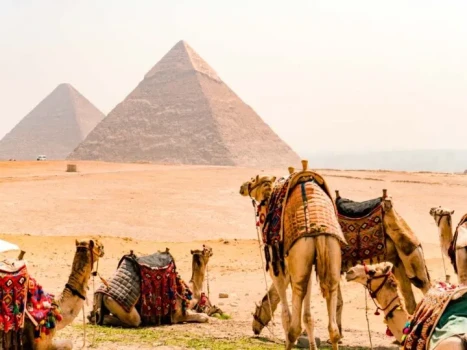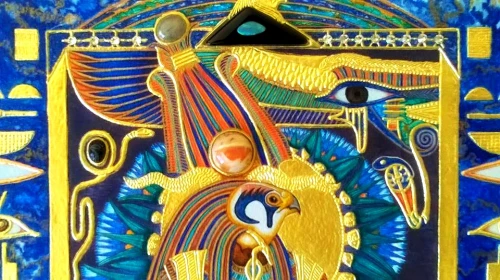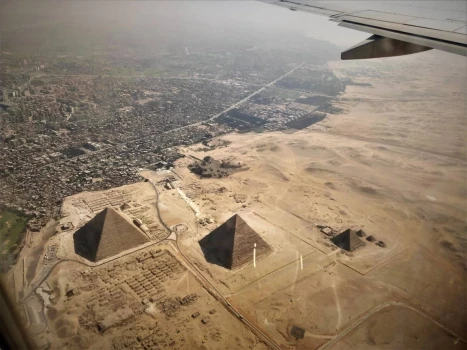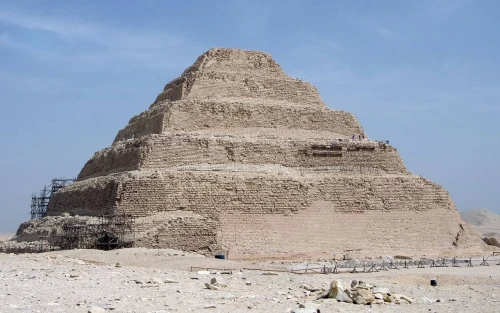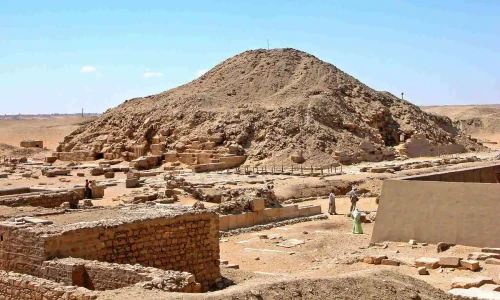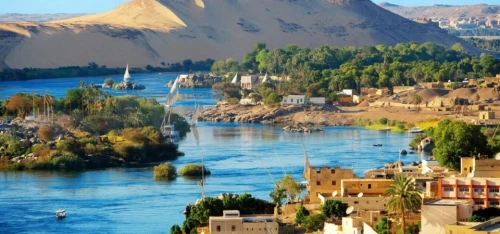
Egypt wouldn't exist without Nile River. Ancient Egypt, growth and survival depended heavily on the Nile River. The ancient Egyptians used Nile as a source of food, water for irrigation, and transportation.
The Nile River is the longest river in the world. It has its beginnings in Burundi and travels over 4,000 kilometres to the Mediterranean Sea. The Nile River of Egypt flows from south to north and is divided into two main streams, the White Nile and the Blue Nile. The White Nile is the river's greatest branch, and it is via it that the majority of water entering Egypt travels. The Blue Nile, a Nile tributary that originates in Ethiopia, plays a role in the yearly flooding of the Nile.
Ancient Egypt's agricultural success depended on the yearly flooding of the Nile, sometimes referred to as the "flood." Because of the abundant silt and fertile soil left behind by the inundation, crops like wheat and barley could thrive there. The floods not only provided water for irrigation, but also made it possible for the ancient Egyptians to grow crops in the often arid desert.
For both trade and transportation, the Nile River was crucial. Between Upper and Lower Egypt, the Nile functioned as a crucial channel for the transportation of both people and commerce. By making it possible for people, ideas, and things to move freely across the country, this promoted economic development and cross-cultural exchange.
The ancient Egyptians obtained their sustenance from the Nile. The ancient Egyptians' diet included a lot of fish because it was plentiful in the Nile. A number of aquatic plants that were used as food and medicinal were also found in the Nile.
The ancient Egyptians also found inspiration from the Nile River. Many gods and goddesses were connected to the Nile and its yearly flooding because it was revered as a source of fertility and life. The ancient Egyptians drew their artistic, literary, and architectural inspiration from the Nile.
Nile Cruise
A Nile cruise is the ideal way to discover these historic towns and their surrounds. Luxor and Aswan are two of the most famous tourist attractions in Egypt. The Nile River, which flows nearly 4,000 miles from its source in Burundi to the Mediterranean Sea, is the longest river in the world. The White Nile and the Blue Nile are the two main streams of Egypt's Nile River, which runs from south to north. Most of the water that enters Egypt flows through the White Nile, which is the river's largest branch.
Nile cruises come in a variety of forms, including customary Nile cruises, Lake Nasser cruises, and Dahabiya cruises. Visitors can explore the Nile in different ways while on each sort of trip, which each offers a distinctive experience.
Traditional Nile cruisers are sizable ships with plenty of room for passengers. These cruise ships often feature a restaurant, a pool, and multiple decks. They normally go between Luxor and Aswan, stopping at a number of well-known tourist attractions along the way, including the Karnak and Abu Simbel temples.
Cruises on the artificial Lake Nasser, which was formed after the construction of the Aswan High Dam, are a more upscale choice and are available. With fewer guests on board, these cruises often offer a more individualised and laid-back experience. Additionally, they give visitors the chance to examine the Abu Simbel and Philae temples and other antiquities that were moved near the lake to escape inundation.
Dahabiya cruises are a more traditional and luxury alternative that provides a more intimate and personalised experience. Smaller boats that can carry fewer passengers often make up dahabiya cruises. They frequently provide more individualised service and move at a slower pace. In addition, Dahabiya cruises frequently concentrate on visiting the less travelled portions of the Nile.
Whichever option you select, a Nile cruise is a fantastic chance to discover the ancient cities of Luxor and Aswan as well as the area around them. For the ancient Egyptians, the Nile River was a crucial source of water, food, transportation, and inspiration. It is still a significant resource for the Egyptian population today. Visitors will have the chance to explore the history, beauty, and ancient civilization that once flourished along the banks of the Nile while on a Nile cruise. Moreover, to discover the Nile's natural splendour, including its palm trees, birds, and other inhabitants.
 English
English
 Spain
Spain

